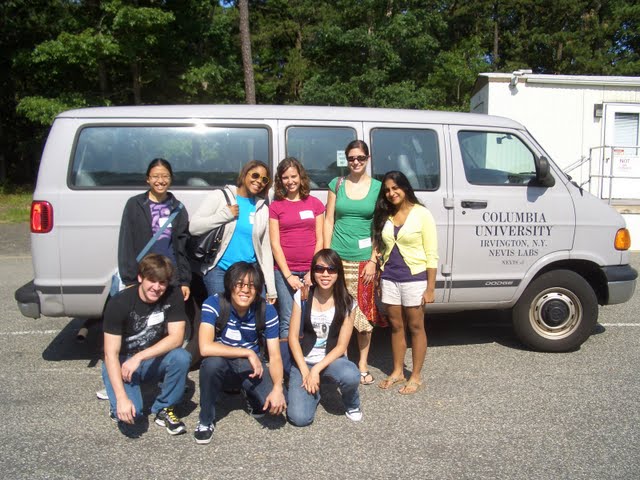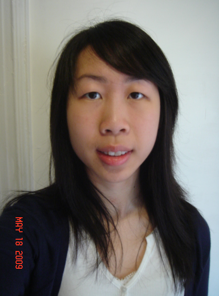|
|
Education & Outreach
2009 REU @ Nevis Labs

|
|
In the summer
of 2009 two undergraduate students, Emily Altiere
(Bryn Mawr College, 5th from left) and Karen Chen
(Boston College, 6th from left), joined the XENON collaboration
and worked on the interesting topics during the 2009 summer.
|
 |
Emily worked on a Compton Coincidence Technique project with two different types of detectors, NaI(Tl) and HPGe.
She set two NaI(Tl) detectors up in a CCT setup such that an incoming gamma ray photon would Compton scatter in the first detector,
depositing some energy, and then the scattered photon would coincidentally deposit the rest of the energy in the second detector at
some angle from the incident photon. Due to the low energy resolution of NaI(Tl), the second detector was replaced with a HPGe detector afterward.
The main purpose for the CCT and Xenon is to replace the first detector with liquid xenon (LXe)
and be able to measure the ionization and scintillation response for charged and uncharged particles at low energies in LXe.
CCT allows for the measurements of low energy deposition in a detector using a high energy source which enables to distinguish
between particles when they deposit energy into the detector and exactly what that energy is.
At the respective
links, one may find
Emiliy's
report
and
presentation on her summer research.
|
 |
Karen worked on the upgraded XENON100 detector design with a specific focus on lowering the electronic recoil background levels
from construction materials. Since WIMPs are very rare events (on the order of 2 events per year per 100kg of xenon)
the detectors must have extremely low backgrounds. The XENON100 detector upgrade should have a factor of 100 less background
with the 100kg fiducial volume. She made Monte Carlo simulations with 4 radioactive decay chains (U238, Th232, K40, and Co60)
for each material for different detector geometries.
She then explored different 100kg fiducial volume cuts to minimize background levels and analyzed the results
to look for possible improvements to the design.
At the respective
links, one may find
Karen's
report
and
presentation on her summer research.
|
|